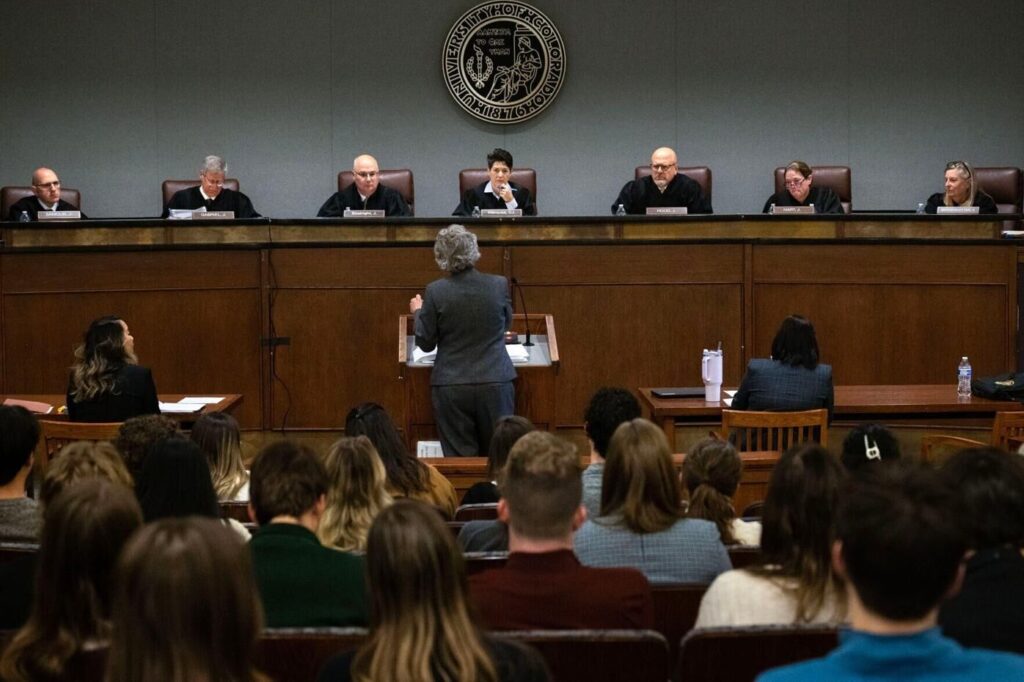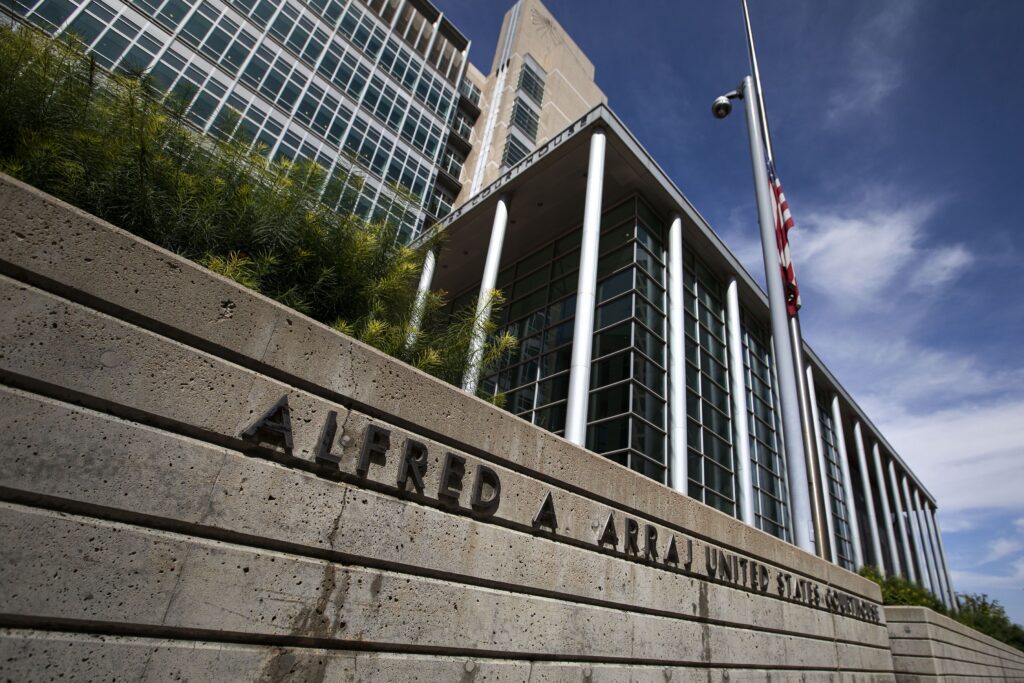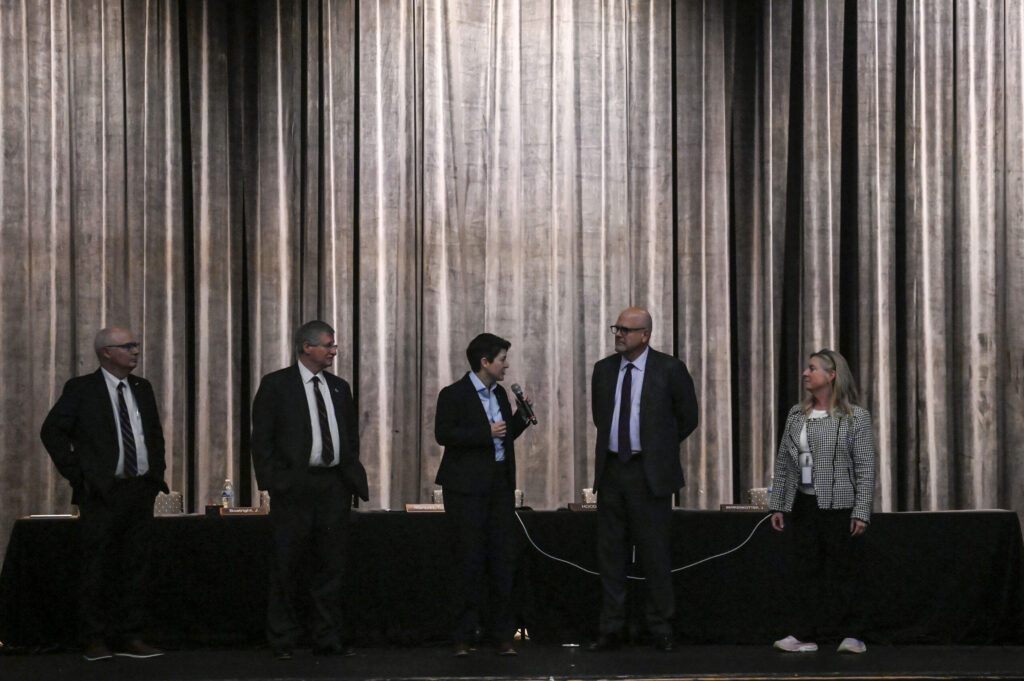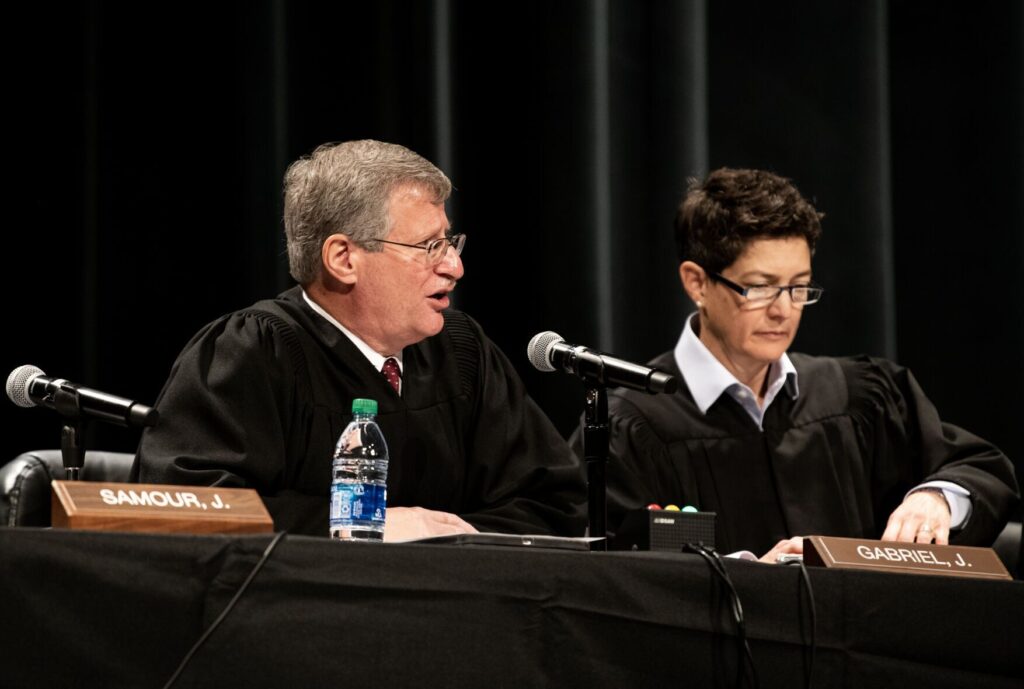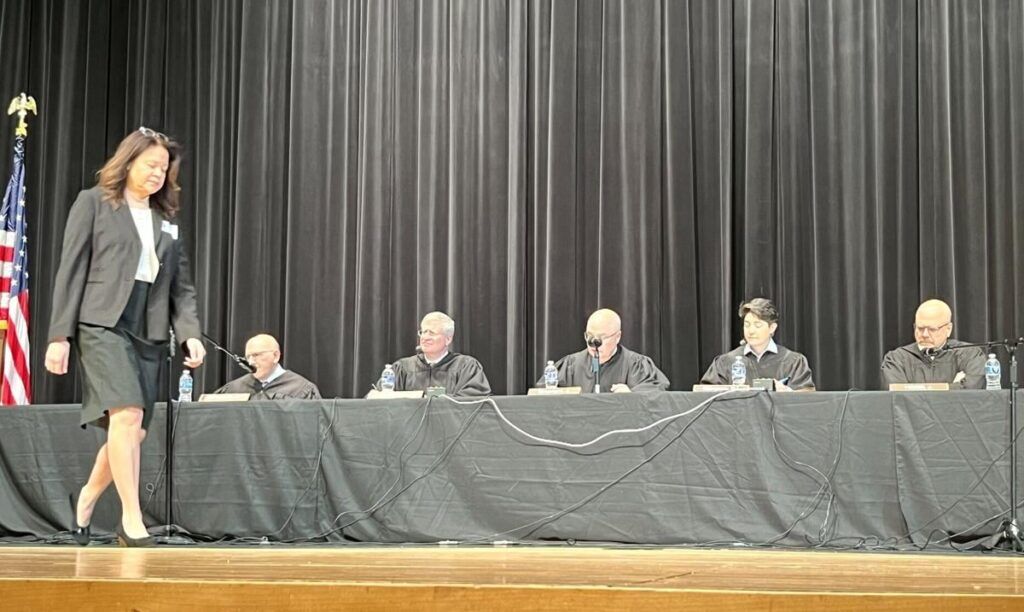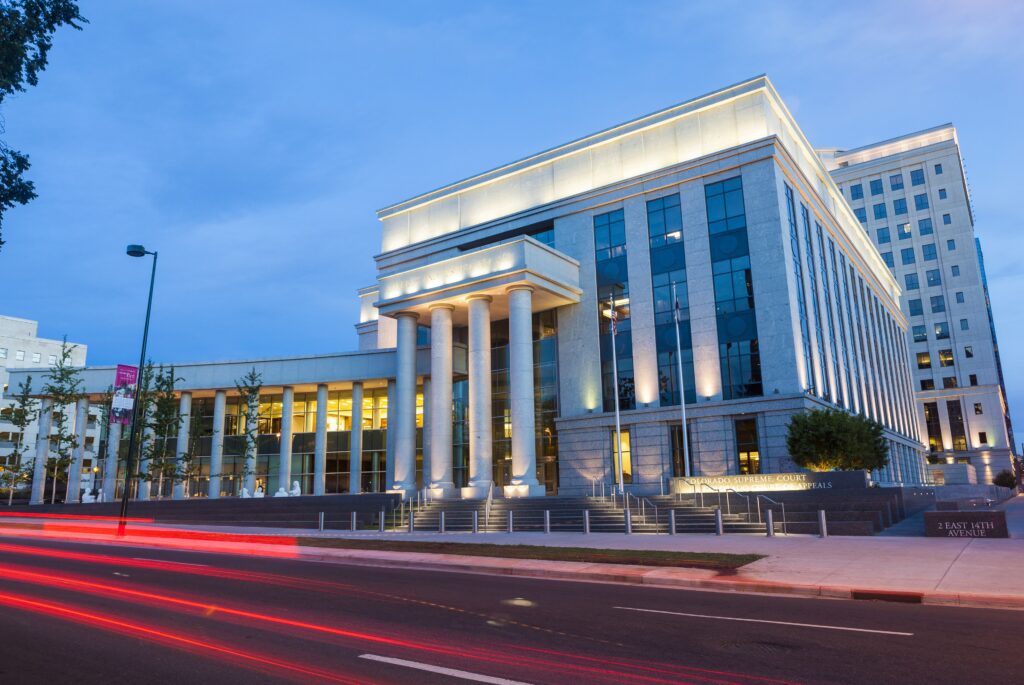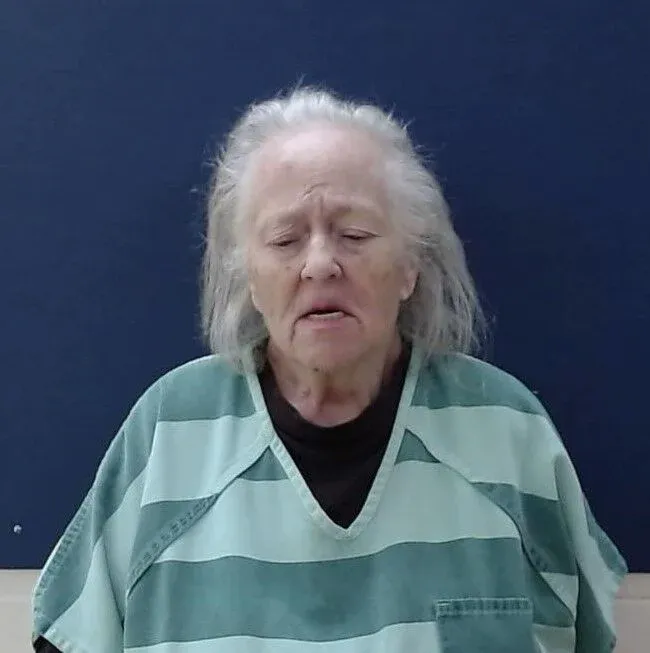Colorado’s federal magistrate judges unveil standardized courtroom procedures for first time
Colorado’s federal magistrate judges presented their proposal for a first-ever set of joint courtroom procedures to an audience of lawyers last week, and emphasized litigants will get a speedier resolution to their case if they agree to let a magistrate judge handle it.
Several months after a group of life-tenured district judges on Colorado’s federal trial court unveiled their own joint protocols for civil cases, known as practice standards, the magistrate judges followed suit. The 22-page draft covers all aspects of courtroom operations ranging from settlement conferences and evidentiary disputes to the font sizes in motions.
“Dare I say this is a groundbreaking moment in the District of Colorado?” said Chief Magistrate Judge Michael E. Hegarty during the March 13 presentation.
Although the practice standards are procedural and do not govern how a judge will apply the law to a case, uniformity can improve litigants’ understanding of the legal process. As with the district judges’ uniform standards, the magistrate judges’ proposed draft contains carve-outs for individual judges on certain issues.
“I liked my practice standards. So, I think I was probably the most resistant,” admitted Magistrate Judge Scott T. Varholak.

FILE PHOTO: The Alfred A. Arraj U.S. Courthouse in downtown Denver. (Photo courtesy of United States District Court – Colorado)
Corralling divergent protocols
Magistrate Judge N. Reid Neureiter recalled joining the court in 2018 and adopting the protocols of then-Magistrate Judge S. Kato Crews, who took the bench around the same time. Although Neureiter’s initial goal was to promote standardization, he, too, found himself altering the practice standards to fit his own style.
“There’s this tension between a judge’s proclivities and what a judge wants to do to run his or her courtroom, and for lawyers to know, ‘Hey, to be ready in front of Judge Neureiter, be prepared for the scheduling conference because he has a long one. Judge Varholak has a short one,'” Neureiter said.
“So, how do you communicate those details while at the same time not having 150 pages of material?”
Hegarty labeled Magistrate Judge Maritza Dominguez Braswell, who was appointed to the court in 2022 and is stationed in Colorado Springs, as the leader of the effort to wrangle all of the practice standards into a streamlined document.
“One of the things I committed to when I joined the bench was to connect with the community. I’m the only full-time magistrate judge outside of Denver,” she said. “One of the comments I’ve heard, especially from folks who don’t practice in federal court regularly: ‘It’s daunting. It’s a lot to work through.'”

Maritza Dominguez Braswell
Encouraging consent
Full-time magistrate judges are hired by the district judges to serve eight-year terms. Although they focus largely on preliminary and administrative matters in cases, they perform many of the same tasks as the district judges, including handling civil cases entirely on their own if the parties consent.
The magistrate judges emphasized that attorneys should speak to their clients about agreeing to a magistrate judge taking over their cases. Neureiter said in his experience, large corporate parties tend to withhold consent to go with the “varsity” squad — the district judges — and not the “JV,” meaning magistrate judges.
“Every person has a constitutional right to have their case heard by an Article III judge appointed by the president and confirmed by the Senate,” said Neureiter, referring to the constitutional provision authorizing the district judges’ positions. But “the Article III judges have encouraged us to encourage you to have intelligent conversations with your clients about consent.”
Recently, Charlotte N. Sweeney, a district judge appointed by President Joe Biden, echoed the call to let magistrate judges handle cases during a legal presentation in January.
“I know some people think it’s ‘second tier’ and they want an Article III,” she said. “It’s nonsense. … I hear tons of complaints about ‘I’ve had this motion pending for two years.’ Well, consent to have the magistrate judge hear it and you’ll be out of there in three months.”

Attorney David Gartenberg applauds for U.S. District Court Judge Charlotte N. Sweeney at a legal event in Denver on July 21, 2023.
Last summer, Hegarty presented statistics corroborating that magistrate judges get through cases quicker. The average time for a magistrate judge to rule on a motion for summary judgment, which potentially resolves the case without a trial, was 5.7 months, compared with 8.3 months for district judges.
Hegarty said he just held a scheduling conference for a recently filed civil rights case and he set the trial for December.
“That case is going to be tried in under 12 months,” he said. “You can’t do that on a district judge’s calendar.”
The issue, the magistrate judges elaborated, is the requirement that district judges handle felony criminal cases — which come with a constitutional guarantee of a speedy trial and, therefore, take precedence over civil lawsuits.
With a civil trial, “you might be on the eve, you’ve geared up, you’ve put in all the time and you get bumped because they (district judges) don’t have a choice,” said Varholak. “That’s not gonna happen in our courtroom.”
Currently, there are two advertised vacancies among the nine authorized magistrate judge positions in Colorado. Crews’ seat is currently vacant upon his appointment in January as a district judge. Hegarty’s seat will be open in January 2025 upon his retirement. A merit selection panel is screening candidates for the district judges to interview.
In addition, a part-time magistrate judge position in Grand Junction remains empty, as the appointee, state trial judge Richard T. Gurley, is awaiting the completion of a background check.
The discussion was sponsored by the Faculty of Federal Advocates.


